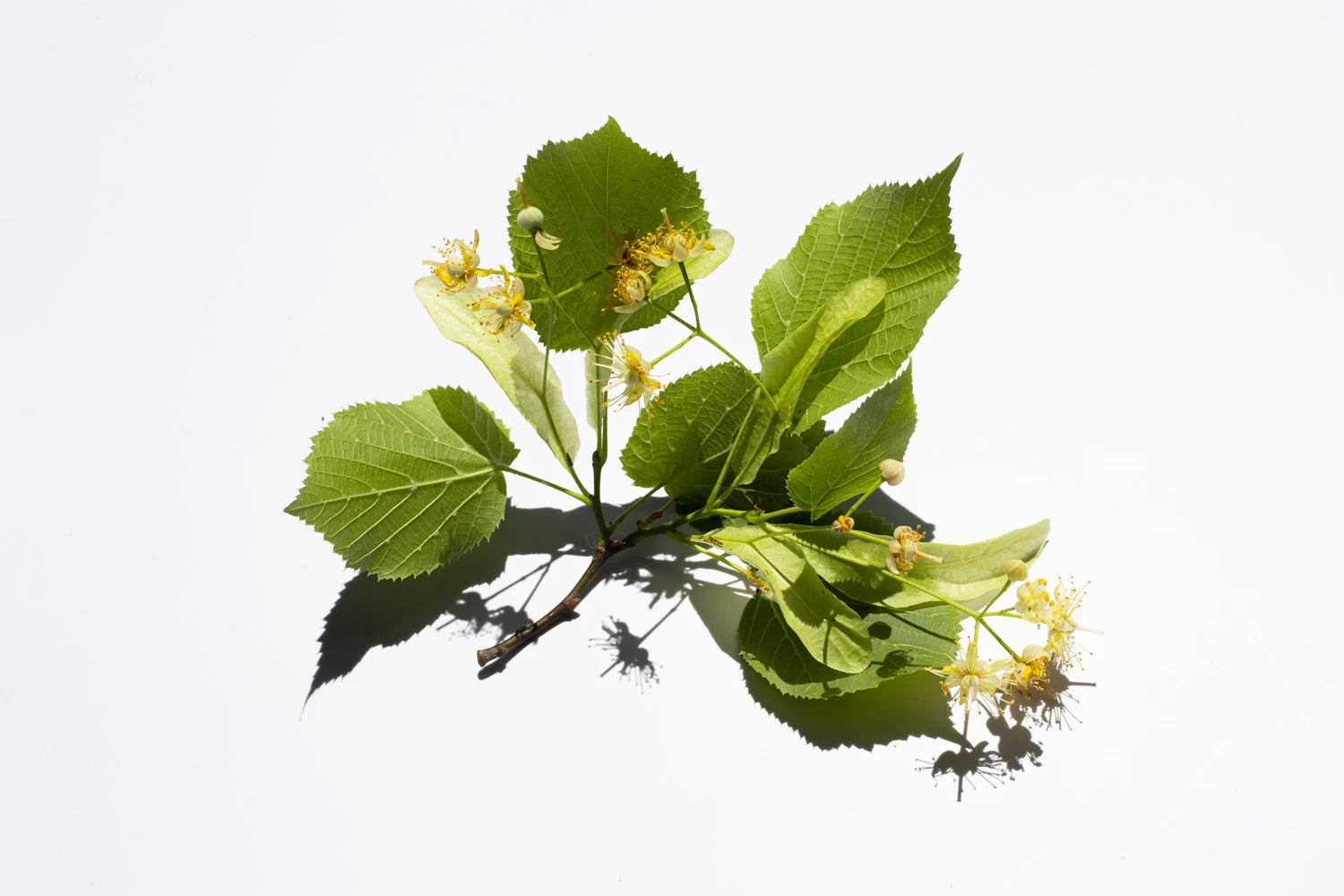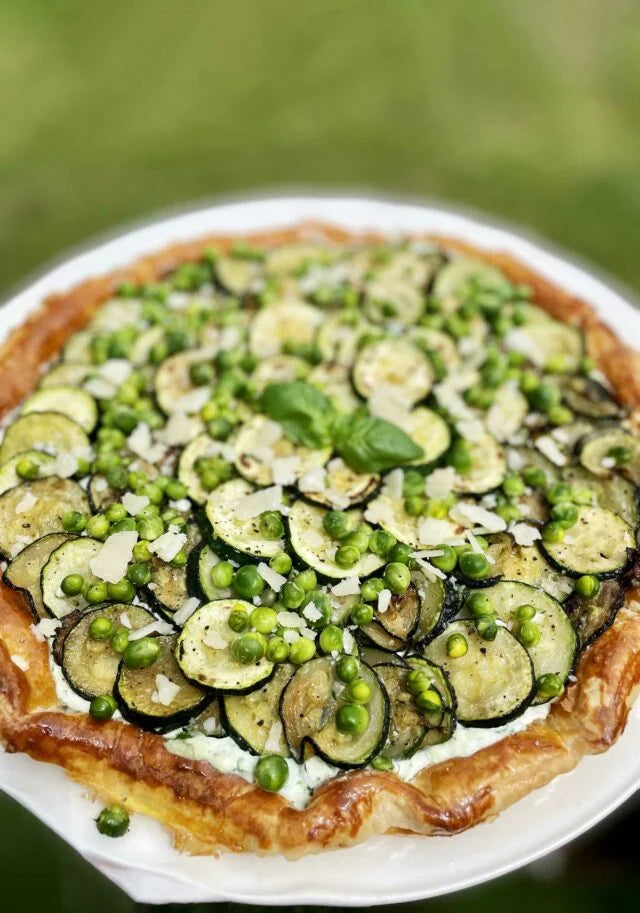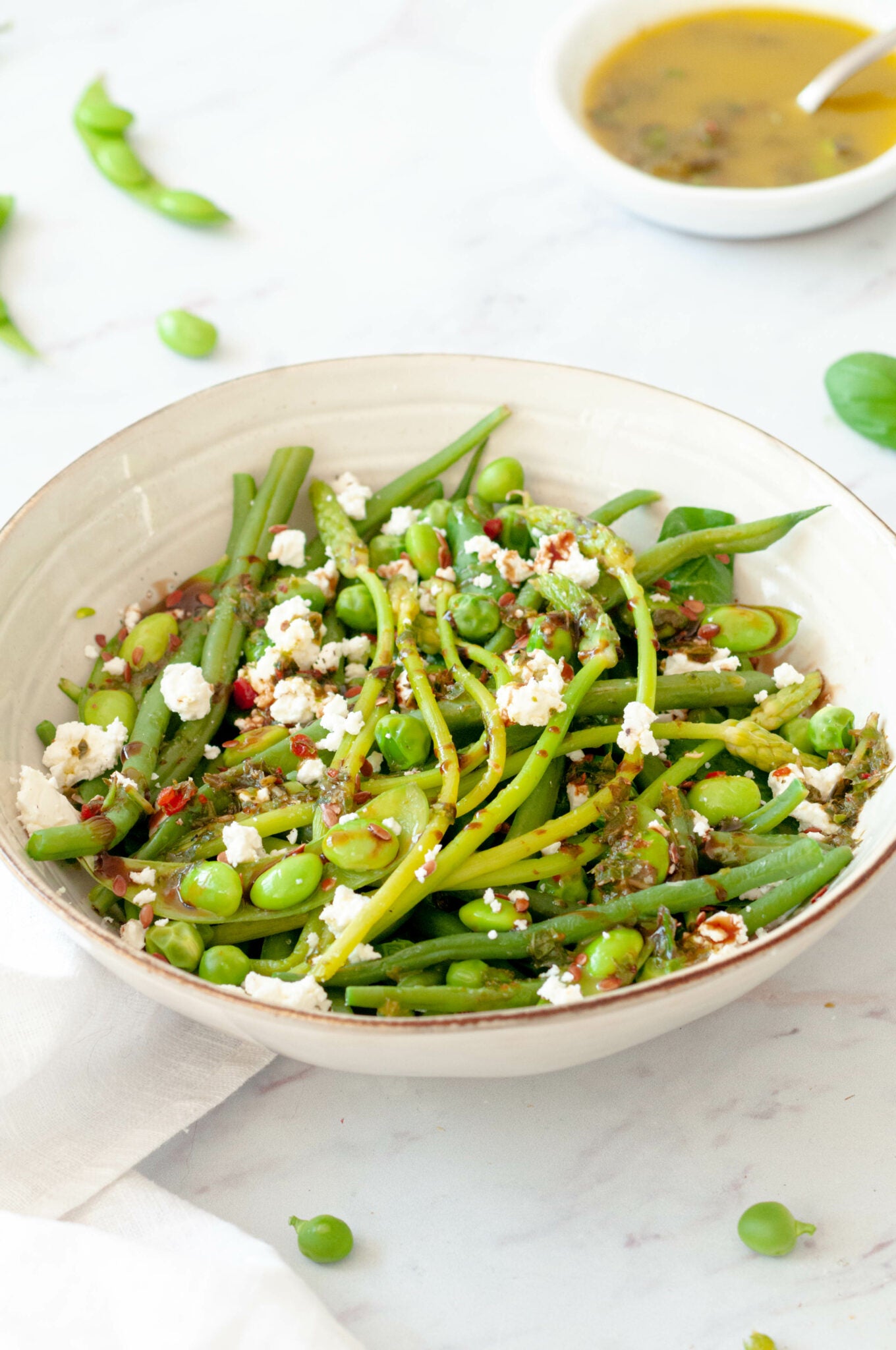
The incredible virtuous flowers of the linden tree
A tree of incredible abundance , the linden tree is a virtuous plant with multiple benefits and uses for millennia . Like no other, it knows how to soothe and regenerate the skin, body and mind , be a medicinal plant , while smelling divinely good and also being edible !
The linden tree is the tree of the soul , it protects , heals and joyfully infuses you with its gentle and maternal strength.
All its parts of course have beneficial active molecules, but its delicate flower is an absolute marvel of Nature .

The life of a linden flower
The tree recharges during the winter when it is dormant . But very quickly small brown growths form on the branches, tiny signs of life which will return with the buds . In March in general, these have grown, they turn green and swell... swell until they burst (we say burst ). They then visibly release everything that was in the making, sheltered and well protected: the leaves and future flowers. Have you ever noticed these little leaves so tender green , with such a smooth and almost shiny surface?
Very quickly the flower buds form, formed in clusters . Small green balls which will also swell over the days until the flowers bloom.
The flowers are grouped in groups of 2 to 7 on a stem , itself attached over part of its length to a translucent pale green bract . The whole forms the inflorescence . Their color? The palette is varied but always sublime in delicacy: based on yellow, depending on the varieties, they can be bright yellow, sunny, joyful , or pale yellow, almost white, sometimes even as we have in the Dordogne area, cradle of TiL , with sumptuous shades of pink or apricot.
They are hermaphrodites , that is to say feminine and masculine at the same time.
A linden flower produces an average of 0.10-0.25 mg of sugars every day (approximately 1 µL of nectar), making it one of the richest and most productive insect-attracting tree flowers . Pollen is very abundant : between 1.5 and 3 million grains per flower, rich in phytosterols, proteins (more than 20%), and amino acids.
Flower production is intense since between 10,000 and 40,000 flowers are available per m3 of canopy , depending on the species of lime trees and the individuals ( www.cari.be ). We understand better why the linden tree is the most honey-producing tree there is!
Virtues that are more than soothing: healing and euphoric!

The linden tree is one of the rare trees that is both medicinal and edible with countless therapeutic and culinary virtues .
The flowers contain mucilage, tannins, sugars , polyphenols and more particularly flavonoids (kaempferitrin, astragalin and tiliroside ) and an aromatic essence (farnesol). Clearly, these molecules give it sedative, anti-spasmodic and diuretic activity, acting on both the nervous system and the digestive system. Linden flowers are anti-depressants and even euphoric, to the point that the lime tree was called the tree of Joy . As joyful as the yellow of its flowers ☺
Flowers soothe the psyche and anxiety , fight against insomnia , help digestion, reduce fever , soothe headaches , pain, spasms, strengthen the defenses , and are good for the skin, which they hydrate, soothe and smooth … yes, all that! It is not for nothing that Pliny the Elder had already named the lime tree “the doctor tree” !
Universal uses
Used since Antiquity, numerous testimonies over the centuries speak of preparations made with linden flowers , for its calming and sedative properties . The herbal tea itself has been used since the 16th century , by the king's doctor himself.
- the flower is edible , like the leaves and flower buds. They are eaten as is in salads, or make wonderful desserts, such as creams, jams or jellies. As for linden honey, it is ideal for those who are anxious.
- it is most often used internally, as an infusion , to calm the nervous system and the anxieties of children and adults, reduce tension and promote sleep . But also to facilitate digestion made difficult by too much nervousness, against fever and ailments of all kinds, spasms and cramps, aches and strengthen the defenses against colds and flu (it reduces nasal secretions). In 1957, when the flu was strong in France, 500 tonnes of lime were infused! All this without any side effects , and usable by the whole family, even the little ones .

- Used since Antiquity, numerous testimonies over the centuries speak of preparations made with linden flowers , for its calming and sedative properties . The herbal tea itself has been used since the 16th century , by the king's doctor himself.
- the flower is edible , like the leaves and flower buds. They are eaten as is in salads, or make wonderful desserts, such as creams, jams or jellies. As for linden honey, it is ideal for those who are anxious.
- it is most often used internally, as an infusion , to calm the nervous system and the anxieties of children and adults, reduce tension and promote sleep . But also to facilitate digestion made difficult by too much nervousness, against fever and ailments of all kinds, spasms and cramps, aches and strengthen the defenses against colds and flu (it reduces nasal secretions). In 1957, when the flu was strong in France, 500 tonnes of lime were infused! All this without any side effects , and usable by the whole family, even the little ones .

A few hours to harvest it
The lime blossom is as ephemeral as it is delicate . Barely a few days a year , it hatches, between the end of May, June and July, depending on the species, location and weather. Earlier in the cities, later in the countryside. Never the same date from one year to the next….no visibility… nature’s time teaches patience and reactivity !!

Very fragile , it remains in bloom for less than a week, 2 or 3 days , then withers and falls, then giving way to the fruits.
The best time to pick flowers is when, on the same “cluster”, there are flowers open and the others still in bud… the “shooting window” for picking is ultimately counted more in hours than in days !
It also corresponds to the incredible buzz of the bees which rush to invade the flowering tree and taste the delicious nectar , and the honeydew which flows when it is very hot (a wonderful softener against burns).
And there we must bring in the pickers who, like us on a ladder, by hand, flower after flower , gram after gram, will take this concentrate of treasures from the tree until they pick up kilos of it to constitute the cosmetic active ingredient. of TiL.
And you know what ? Their sweet, honeyed scent is so fragrant and soothing that in the evening the whole team is “stoned” ☺. It also seems that some experts are able to distinguish the scents of linden flowers from different origins...
In the family estate in Dordogne, cradle of TiL, the scent is particularly pronounced, according to our pickers. Probably due to the fact that our trees have been rooted for more than 150 years , in full bloom and prime, free from all cultivation, pollution and pesticides , in an ultra-preserved environment , in the heart of the Périgord Limousin Regional Natural Park.

What other tree produces flowers with such powers ?
None, and it is no coincidence that writers have often celebrated them, like Colette who wrote:
“My god, breathe the lime tree when it is a volcano of bees,
a bush of red flowers, the rival of the orange tree,
the insidious lover , the pollen in golden rain , is that not enough?
and boiled, it still falls to him to cure our fevers ! »
As fragile as they are powerful , they amaze us every year, and we watch for them with wild impatience while knowing that only nature holds the tempo ...


